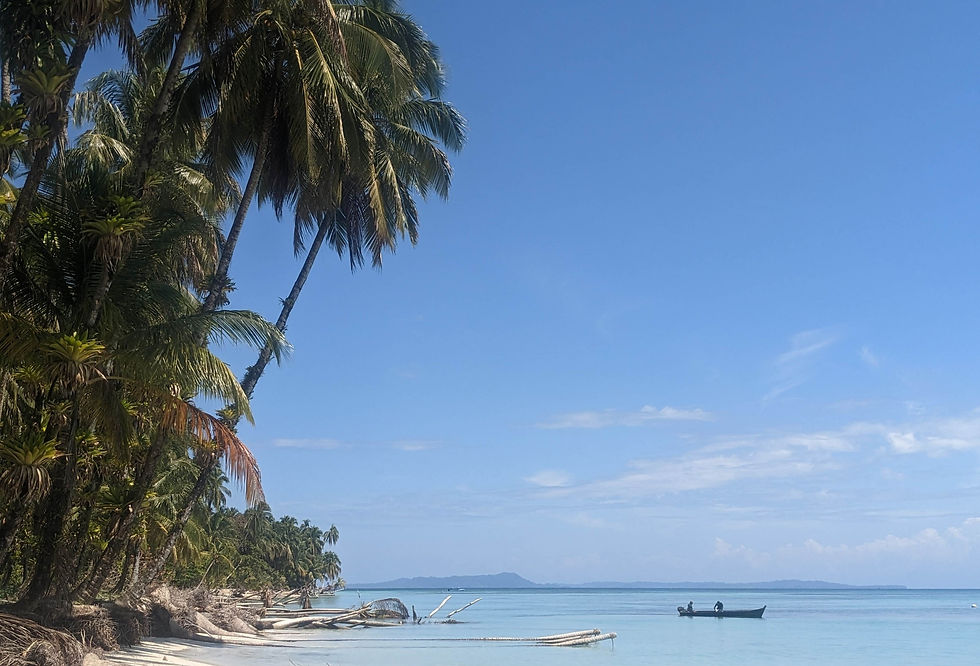Panama City: Vultures and Skyscapers
- Lucas Delastic

- Sep 27, 2023
- 3 min read

Out of the darkness appeared a line of lights. The friendly Colombian lady sitting next to me said these were boats awaiting entry to the canal. After 20 + hours in transit, we were finally approaching Panama City. Leisa slept for some of the journey. I did not. 15 hours across the Pacific. Four hours layover in Houston; apparently, the worst airport in the States. Four hours South to Panama City.
We awoke in a daze to empanadas, salchichas and chicha morada. A hot breakfast served with cold indifference by staff who were also still waking up. Hoping to seize the day before the jet lag hit us, we made plans to hike up Cerro Ancon, a hill that overlooks the city, the canal, but most importantly, a prime location to see sloths.
To backtrack, sloths were a big deal to Leisa and I coming into this trip. We had previously spent a year in Latin America with no sloth encounters. Lucky for us, only ten minutes into the hike, we saw a sloth holding a baby. This would be the highlight of our time in Panama City.
After the hike, we visited ‘MAC Panama’, the Museum of Contemporary Art. I often find these galleries very hit or miss. This one was definitely a hit. Seeing a pile of bananas in the corner in the name of art really struck a chord with me. It made me think of a recent documentary I had seen on the United Fruit Company and its exploitation of workers and communities across the region to support the geo-strategic interests of Uncle Sam in its fight against communism. Maybe I was overthinking it? Maybe it was just some bananas on the floor?
After the gallery we took an Uber to the old town of Casco Viejo. En route, we passed through the infamous barrio of El Chorrillo, known for gang violence and catching fire during the 1989 US invasion. The contrast between El Chorrillo and Casco Viejo is stark, with upmarket hotels and slums being only a few streets apart, a timely reminder that Panama has the most unequal distribution of wealth in Latin America.
Unfortunately, Leisa’s health took a turn for the worse; she tested positive to COVID-19. We knew this would probably happen eventually, but not the second day. It did make sense, given our time in aeroplanes and airports.
Leisa spent the next few days with a fever in the hotel room. She didn’t want to infect anyone but also felt too sick to go anywhere. It was very boring for her but she would nap and then wake up and watch what became our favourite cable TV station ‘El Gourmet’, featuring chefs from across Latin America. At least she was listening to some Spanish.
For the next few days, I spent my time exploring the city and sourcing affordable takeaway food options for Leisa. She lost her taste and was getting pretty sick of the overdone scrambled eggs at the hotel. I managed to find some Panamanian chicken and rice for her from a convenience store. We had no kitchen, so we couldn’t cook or prepare anything ourselves.
In the mornings I would run up the Malecon, a walkway that runs along the coastal side of the city. In the evenings I would drink beer at a local Cuban restaurant and watch vultures fly around the skyscrapers. After a few more drinks, I imagined the real vultures were the suits inside the skyscrapers plotting tax loopholes for the rich, famous and multinationals. It was time to leave.




